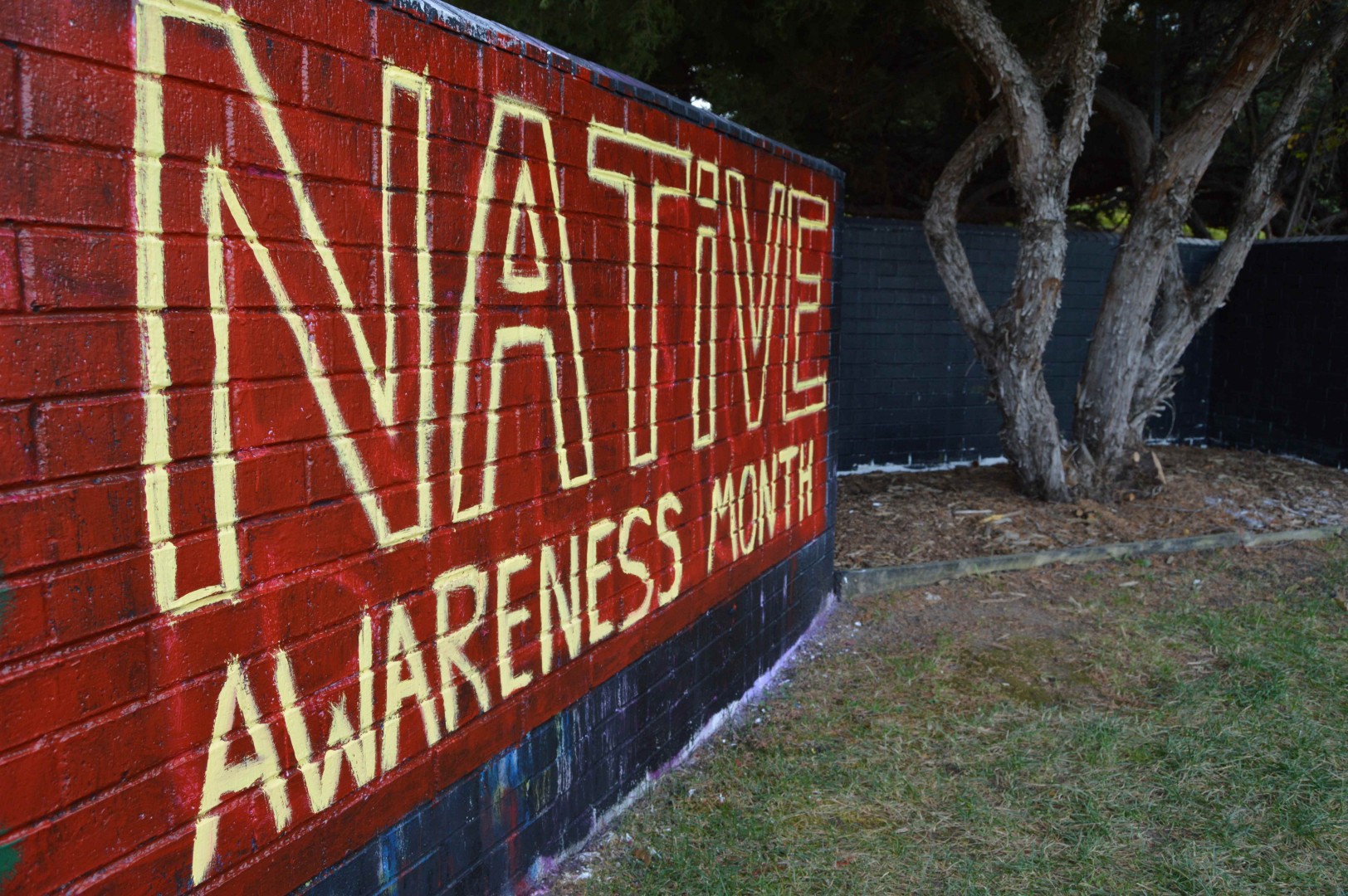Written By: Jillian Queri and Madeline Zann
According to the US Department of Justice, Native American women are two and a half times more likely to be a victim of sexual assault than women of any other ethnic minority. 64 percent of Native American women have been raped and/or physically assaulted in their lifetime.
Students in Billy J. Stratton, PhD’s. Native American Literature course, as part of Native American Heritage Month, have decided to take the initiative to host educational events and promote public awareness of Native history on DU’s campus. The students were inspired by Frances Washburn, PhD’s. novel “Elsie’s Business,” which tells the story of a Native American woman who is murdered and is based on true events.
“I keep returning to [teach] ‘Elsie’s Business’ because I think that the pressing concerns of violence against Native women that’s been happening since colonialism is something that her novel is able to connect with in a very personal way,” said Stratton.
Although the book is fictional, it brings attention to real life issues within the Native community.
“There are so many problems facing American Indian woman that is hard to know where to begin, but violence . . . is at the top of the list,” said Washburn, who is a professor of Native American studies and English at the University of Arizona as well as a member of the Oglala Lakota Nation. She also has Anishinaabe heritage. “People have to become aware of the situation. That is why I wrote ‘Elsie’s Business’. Books and words have power to change people’s thinking for good or for ill, and there are multiple circumstances that prove the case.”
Native American history is even more critical at DU because of its connection to the Sand Creek Massacre. This attack on the Arapaho and Cheyenne tribes camped at Sand Creek in southeastern Colorado occurred during DU founder John Evans’ tenure as territorial governor and was carried out by the Methodist minister John Chivington, cumulating in the deaths of around 200 Native Americans, many of them women and children. This history of colonial oppression has led to a culture where violence against Native people today is more common, particularly against women.
“I think the Sand Creek Massacre and the treatment of the Arapaho and Cheyenne that occurred in 1864 is reflective of this larger systemic problem that we continue to deal with over 150 years later. Far too often, there isn’t justice for Native people,” said Stratton.
On Nov. 11, with hopes to inspire DU to learn more about these pressing issues, students from Stratton’s Native American literature course tabled from 11 a.m. to 4 p.m. on Driscoll Bridge. With the goal of providing the DU community with various facts and information regarding the violence against Native women and Native history, students from Stratton’s class displayed photographs, poetry and various educational posters.
“Awareness and acknowledgement won’t right the wrongs of the past but they can at least begin the healing process and lead to proper change in the future,” said Jessica Garland, a sophomore English and political science major in Stratton’s Native American literature class. “Hopefully these awareness campaigns will be a stepping stone to actively promoting the equality and rights of Native women across all of North America.”
A report by the US Department of Justice states that 17 percent of white women report having been raped in their lifetime, while 19 percent of non-white women say the same. However, 34 percent of Native women report that they have been raped, a much larger number.
“All of it goes back to the Colonial context of North America and the way Native people were not only treated, but the way that they have been represented through time as subhuman. If you can do that to a group of people, you persistently create a perception that they’re less human, and I think the persistence of that idea leads to their continued treatment as less than human,” said Stratton. “There’s plenty of violence against women in the dominant culture society that isn’t really being addressed. Native women, because they’re Native and women, bear a heavier burden.”
Additionally, DU’s Center of Multicultural Excellence, in partnership with Rocky Mountain PBS, will be hosting a free screening of the film “The Colorado Experience: Sand Creek Massacre” at 5:30 p.m. on Nov. 12 in Sturm Hall room 151. Free and open to the public, this event is meant to educate the community about the Sand Creek Massacre of 1864. Following the showing of the film, there will be an open discussion regarding the tragedy and historical event with some of those involved in the filmmaking. To conclude the evening, students from Stratton’s class will be hosting a candlelight vigil in honor of missing and murdered Native women in North America, as well as those lost at Sand Creek. Beginning at 8 p.m. on Driscoll Green, the entire DU community is invited to attend.
“We need more empowerment in educational and career opportunities. We need support systems at the family, community and larger state and federal level to teach women that no matter how poor, how uneducated or otherwise unlucky, that they are all valuable as human beings. We need legal systems that will pursue evidence and bring criminals to justice, while supporting the victims,” Washburn said.
For more information about violence against Native American women, there are a number of resources online, including indiancountrytodaymedianetwork.com and lostandmissinginindiancountry.com.











